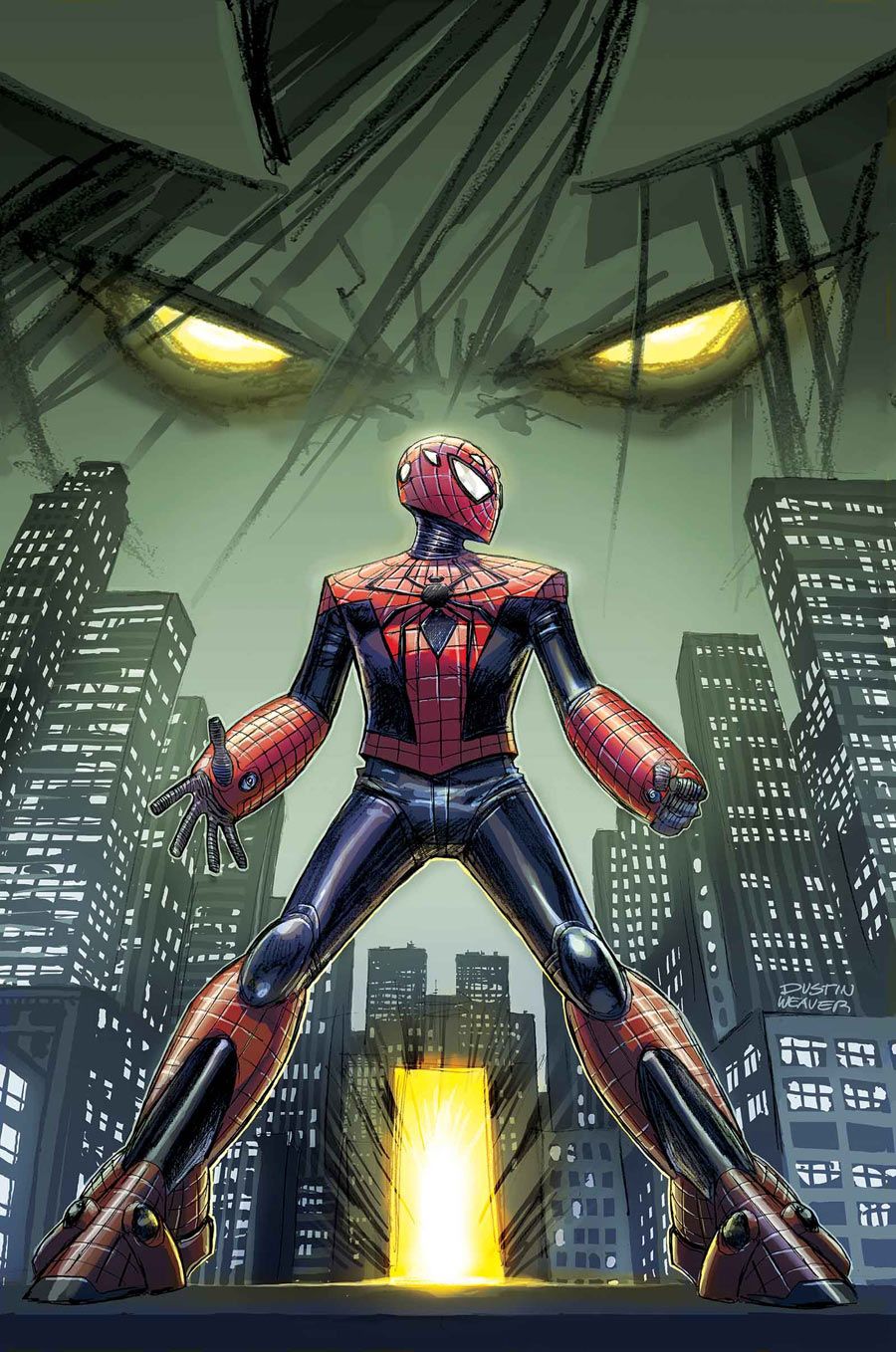Dustin Weaver's first foray into writing for Marvel is spun in the webs of "Edge of Spider-Verse" #3, as he introduces readers to a universe where only the name Spider-Man is familiar. First blush visuals puts Aaron Aikman's look squarely between Peter Parker and Otto Octavius (with an alliterative name to boot), but Weaver has made it clear on his blog that John Lennon's appearance is a heavy factor in the look Aikman sports throughout this issue.
A molecular biologist for the Ikegami Medical Center, Aikman has performed secret experiments upon himself, hoping to unlock the secrets of invertebrates. Weaver pours a very thick two-page info dump on readers, introducing them to Aikman and Ikegami, better known as Redeye and Naamurah. The latter proves to be a vexing foe throughout "Edge of Spider-Verse" #3, leading to the final page of this issue, where Weaver halts the story by dropping "The End" on the apex of the adventure, as Spider-Man is in hot pursuit of Naamurah's forces.
There is no direction provided for readers to follow this tale, but one can naturally presume by the convenient checklist on the final page that "Edge of Spider-Verse" #4 will have some answers. Maybe. In the interim, readers are left to review this story, soaking in the lavish details Weaver draws, the components he identifies on Spider-Man's suit and the relationship between Aikman and his girlfriend/boss, Kaori Ikegami. Aikman is not the most relatable character in comic book history, nor is he particularly harmonious with the base Spider-Man concept, but the technology he employs and the choices he made have set him upon the path of Spider-Man. Yes, he shares powers relative to a spider and his mind is one of his greatest weapons, but the costume could easily be shaded different colors and the result would not necessarily be relevant to Spider-Man.
That doesn't keep Weaver from crafting a beautiful comic book with whimsical touches and inspired visual choices. The two villains are introduced through replicas of the Marvel trading cards from the 1990s. This is a wonderfully nostalgic choice certain to catch readers' eyes, jog their memories and sustain their attentions. Those two "cards" happen very early on in this issue, but I found myself hoping for at least another issue to see some more. Aaron Aikman's Spider-Man costume is a technological wonder, and Weaver's choice to provide cutaway descriptions of its construction and function give readers another peek behind the curtain as the story is congealing. The battle sequences and quieter moments of "Edge of Spider-Verse" #3 are filled with detail and resplendent in dynamic storytelling, adding further credence to more of Aikman's adventures under Weaver's direction.
Perhaps feeling limited by the space, Weaver packs a lot of story into "Edge of Spider-Verse" #3, and pushes the exposition right up to the edge of "too much." Aaron Aikman and Ikegami are not afforded the space for their relationship to organically blossom, nor does Weaver have the chance to let readers discover the world around Spider-Man. Letterer Clayton Cowles handles all of that with crisp, clean, well-appointed caption boxes, weaving them in and around Weaver's dynamic storytelling and detailed drawings. This is an astonishingly thick read that gives readers just enough to know they should want to see more of Aaron Aikman and the rest of Dustin Weaver's adventures on the "Edge of Spider-Verse."

